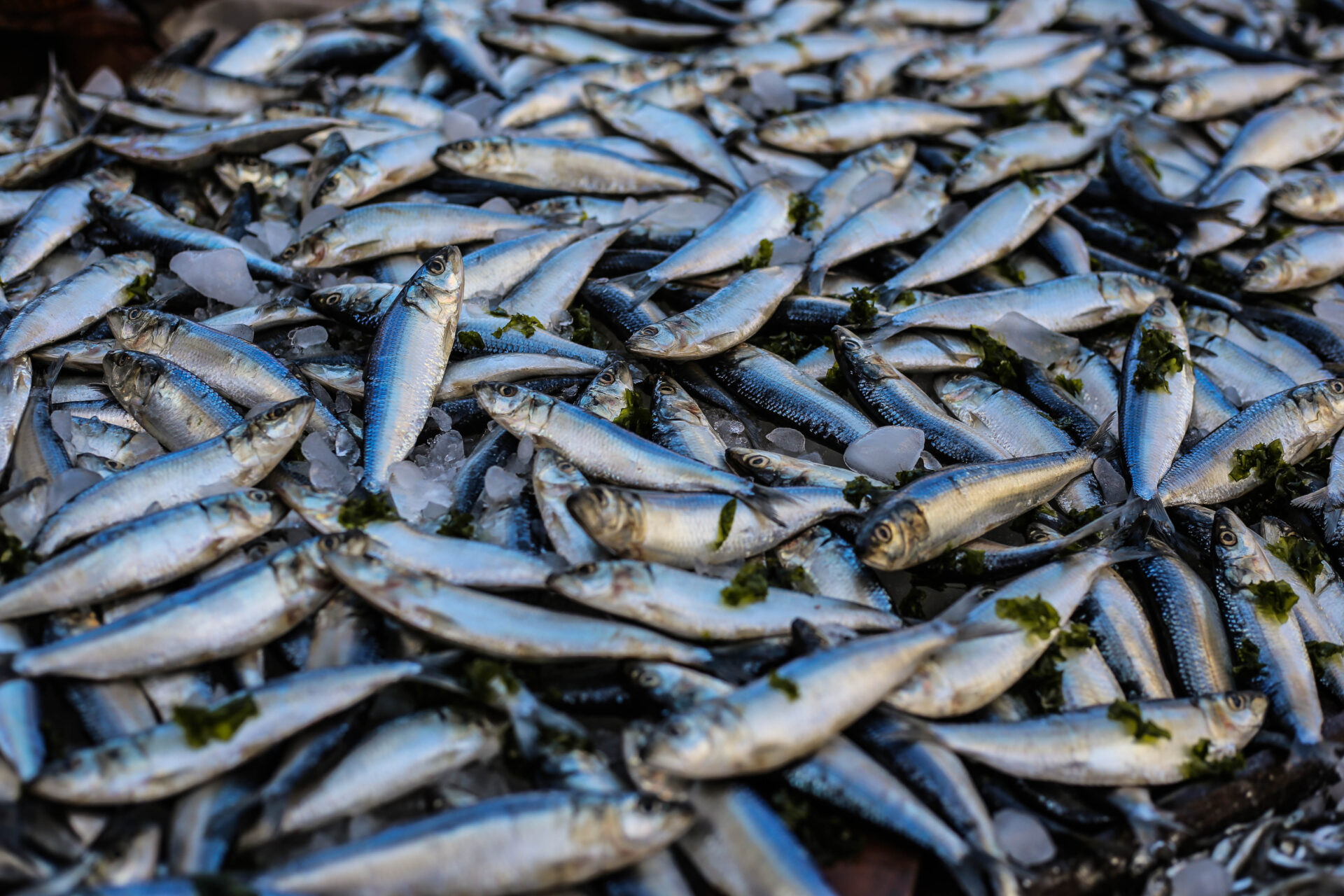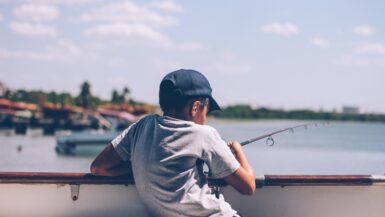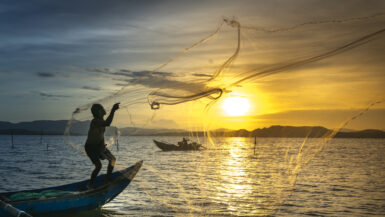Trout fishing is one of the most popular activities for anglers all around the world, but it can be especially rewarding to those who seek out secluded spots like small creeks and streams. While some of the basic rules of trout fishing hold true across all bodies of water, it’s important to take the time to research the best baits that will be most effective in the tiny creeks and streams you plan to explore. In this article, we will discuss the best baits for catching trout in small creeks and streams.
Essential Gear
Trout fishing in small creeks and streams is an exciting, rewarding activity—and it requires the right gear. When it comes to baits and lures, you need ones that are specifically designed for trout fishing and will be effective in smaller waters. Here is a list of essential gear that is essential for successful trout fishing in creeks and streams.
Lures and Spinners
Spinners are a great way to catch trout, especially in slower-moving waters. They provide a lot of action and often imitate insects and other small fish that trout feed on. Common types of spinners that work well for trout fishing include Mepps, Panther Martins, Rooster Tails, and Blue Foxes. It’s a good idea to carry a variety of sizes, colors, and shapes to find out which ones work best.
Bucktail Jigs
Bucktail jigs are another great option for catching trout in creeks and streams. They are weighted to sink, and the bucktail helps to attract trout. They come in a variety of colors and sizes and are a great choice for wading in small waters.
Spoons and Buzz Baits
Spoons and buzz baits work well in smaller waters, as they can be cast easily and provide enough action to attract trout. Smaller spoons like Mepps Little Wolf and Acme Kastmasters are great choices for streams and creeks, as they are lightweight and easy to cast. Buzz baits are also a good choice, as they produce a lot of surface disturbance that can attract trout.
Soft Plastics
Soft plastics are becoming increasingly popular for trout fishing in smaller waters. Small, realistic-looking plastics like worms and minnow imitations are great choices for streams and creeks. They can be fished on a jig head or used as a floating bait to imitate a natural food source.
Natural Baits
Natural baits are also a great option for trout fishing in small creeks and streams. Worms, maggots, and crickets are all great choices as they provide a natural food source for trout. They can also be used in combination with other lures and baits for a more effective presentation.
Fly Fishing
Fly fishing is one of the best ways to catch trout in small creeks and streams. Smaller emergers, nymphs, and dry flies are effective in these waters and can be difficult for trout to resist. For stream fishing, it’s often best to use a 7-9 foot rod and a floating or sink-tip line.
Trout fishing in small creeks and streams can be an exciting and rewarding experience. By using the right gear and the right baits, you’ll be able to land more trout and enjoy your time on the water. Make sure to keep these essential gear items in mind and you’ll be sure to have a successful trout fishing trip.
Popular Baits
Trout bait, sometimes known as trout chum, is an incredibly effective and popular method of catching trout in streams and creeks. When used correctly, trout bait can be very effective at luring these slippery creatures out of hiding and into yours nets. The type of bait and how it’s used can vary greatly from location to location, but you’ll likely find that the best baits for catching trout in small creeks and streams are those that are both readily available and attractive to the fish.
Worms, the Classic Trout Bait
The classic trout bait is undoubtedly worms, which can be purchased in most bait shops and tackle stores. Worms are a natural food source for trout and they usually put up a good fight when caught. Worms can be used as a floating bait, with a small weight attached to the line to keep them submerged, or on a hook near the bottom of the stream where the trout are likely to be found.
Small Insects
Small insects, such as grasshoppers, crickets and caddis flies, are some of the most attractive and effective baits for catching trout in small creeks and streams. Small insects are easier for trout to catch, and they offer significantly more attraction than larger versions. Trout particularly love caddis flies, which are available in many bait shops and fishing magazines.
Cheese and Corn
Cheese and sweetcorn are also popular trout baits that can be used to great effect in streams and creeks. Cheese is attractive to trout and makes a very effective floating bait. Sweetcorn is also appealing to trout and can be used in an array of different ways. Sweetcorn can be used as a “stink bait”, where it is attached to a hook or string and left in the water to “stink” out the trout, or it can be used as a floating bait.
Power Baits and Dough Baits
Power baits are a popular choice for trout fishermen, as they are readily available in most fishing supply stores and can be used as a floating bait on a hook or artificial lure. Power baits are attractive to trout and will often be taken quickly when used correctly. Dough baits are also effective when used in small creeks and streams, as they offer the opportunity for trout to feed on something with more texture and substance.
No matter the bait you choose, it’s important to remember the importance of presentation when using trout bait. Trout are very sensitive and will respond better to bait that is properly presented and breaks the surface of the water in an appealing way. With a bit of practice, you’ll soon be able to find the best baits for catching trout in small creeks and streams.
Presentation Technique
When fishing for trout in small creeks and streams, knowing which bait to select is essential. The right bait can mean the difference between success and failure, and the size and type of trout found in creeks and streams should be taken into consideration when making a selection. There are a variety of baits that can be used to catch trout in small creeks and streams, and each type can be used with the correct technique to increase your chances of catching a fish.
Importance of Presentation Technique
Effective presentation is key when fishing for trout in small streams and creeks. Careful placement of the bait, as well as the speed and manner in which it is presented, are important factors that can have a huge influence on the success of the angler. Experimenting with a variety of baits and techniques can be a great way to find the combination that works best for a particular type of trout.
When presentation is done correctly, the bait should be placed near the trout’s strike zone in order to maximize the chances of a successful catch. The bait should be gently presented, and the line should be held tight and the rod should be kept still. When the trout takes the bait, the angler should quickly set the hook and then follow with a strong and smooth reel.
Fish Attractants for Trout
Another important factor when fishing for trout in small streams is the use of fish attractants and scents. Fish attractants are designed to attract more trout to the fishing area, and they can be used in conjunction with the right bait to increase the chances of a successful catch. There are a variety of fish attractants on the market, both natural and store-bought, and they can be used to bring the trout closer to the bait.
Fish attractants can be sprayed directly on the bait or in the water, and they can also be used by suspending them from the line. It is important that the attractant is applied safely and without harming the trout or the environment. Additionally, it is important to remember that the use of chemical attractants is prohibited in many areas, so it is best to check local regulations before using any attractant.
Choosing the Best Baits for Trout
When selecting the best baits for trout, it is important to consider both the size and type of trout that are present in the stream. Spinners and spoons are popular choices for bait, and they can be used with or without an attractant. Many anglers also prefer to use natural bait such as worms, minnows, and eggs, as these can often be more successful than artificial lures.
The type of bait used should also be matched to the water conditions. For example, lighter baits may be more effective in shallow and clear waters, whereas heavier baits are better suited to deeper and turbid waters. The size of the bait can also make a difference, as larger baits can often attract larger trout, while smaller baits may be more successful with smaller fish.
By selecting the right bait and pairing it with the correct presentation technique and attractant, anglers can increase their chances of landing a trout in small streams and creeks. With a bit of experimentation and practice, anglers can find the combination that works best for them and ensure that they get the most out of their fishing experience.
Tips for Successful Trout Fishing
Trout fishing is one of the most popular activities in small creeks and streams. Whether you are a beginner or an experienced angler, trout can be found in most freshwater lakes and rivers. To have the most successful fishing experience, it’s important to learn the basics of trout fishing, including the best baits for catching trout.
The Best Baits for Trout Fishing
The type of bait you use for trout fishing can vary, depending on the size, location, and water temperature of the body of water you are fishing in. Common baits include worms, minnows, and mealworms. Artificial or fly lures can be also effective for trout fishing. When selecting bait, make sure it’s the right size and color for the type of trout you’re targeting.
Tips for Trout Fishing Success
When trout fishing, it’s important to use the right equipment. A lightweight spinning rod and reel are ideal for a successful trout fishing experience. You should also use the right line size, which should be 6 to 8 pound test. It’s also important to use the right type of lure or bait. You should also pay attention to the current and water temperature, as trout tend to feed more actively in warmer waters.
Where to Look for Trout
Trout are found in most small creeks and streams and prefer areas with plenty of rocks and plants. Look for deep pools and pockets in the river, as well as small pockets along the shoreline. You can also find trout in deep areas of lakes. Make sure to pay attention to the type of habitat the trout are in, as different types of trout may prefer different habitats.
Tips for Proper Presentation
Once you have the right bait and equipment, you need to make sure you are presenting the bait correctly. When trout fishing, it is important to cast the bait close to objects like rocks, logs, and plants. You should also retrieve your bait slowly and steadily. Varying the speed of your retrieve can also be effective in enticing trout. Pay attention to the direction of the current and cast your line upstream in order to drift the bait downstream.
The Benefits of Trout Fishing
Trout fishing is an enjoyable activity that can provide you with a fun and rewarding experience. Trout are also known for being a great tasting fish, with a delicate flavor. With the right technique and the best bait, you can have a successful fishing experience in small creeks and streams.
Picking the Right Lures for Trout Fishing
Lure fishing is an effective and fun technique for catching trout in small creeks and streams. When planning an outing, be sure to bring a good selection of options, like rooster tails, spinners, spoons, and jerkbaits. To be sure you have the right lure for the right situation, consider the water temperature and season, as well as the size of the trout and the speed and clarity of the current. When you have the right bait and presentation, you’re all set for an enjoyable day of trout fishing!





Leave a reply